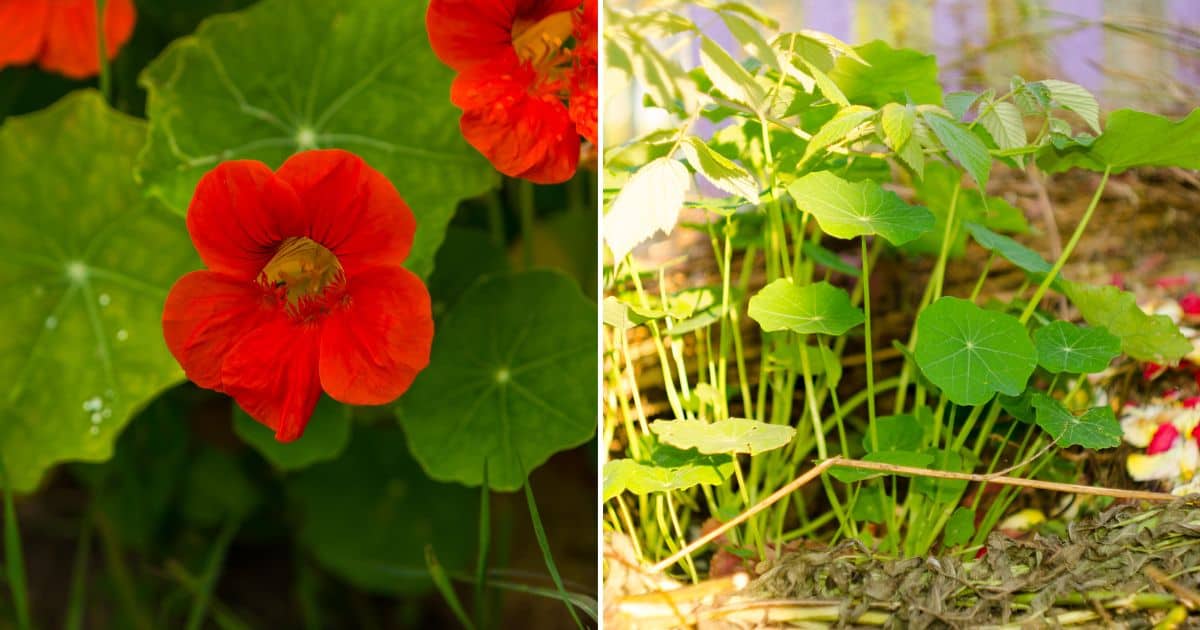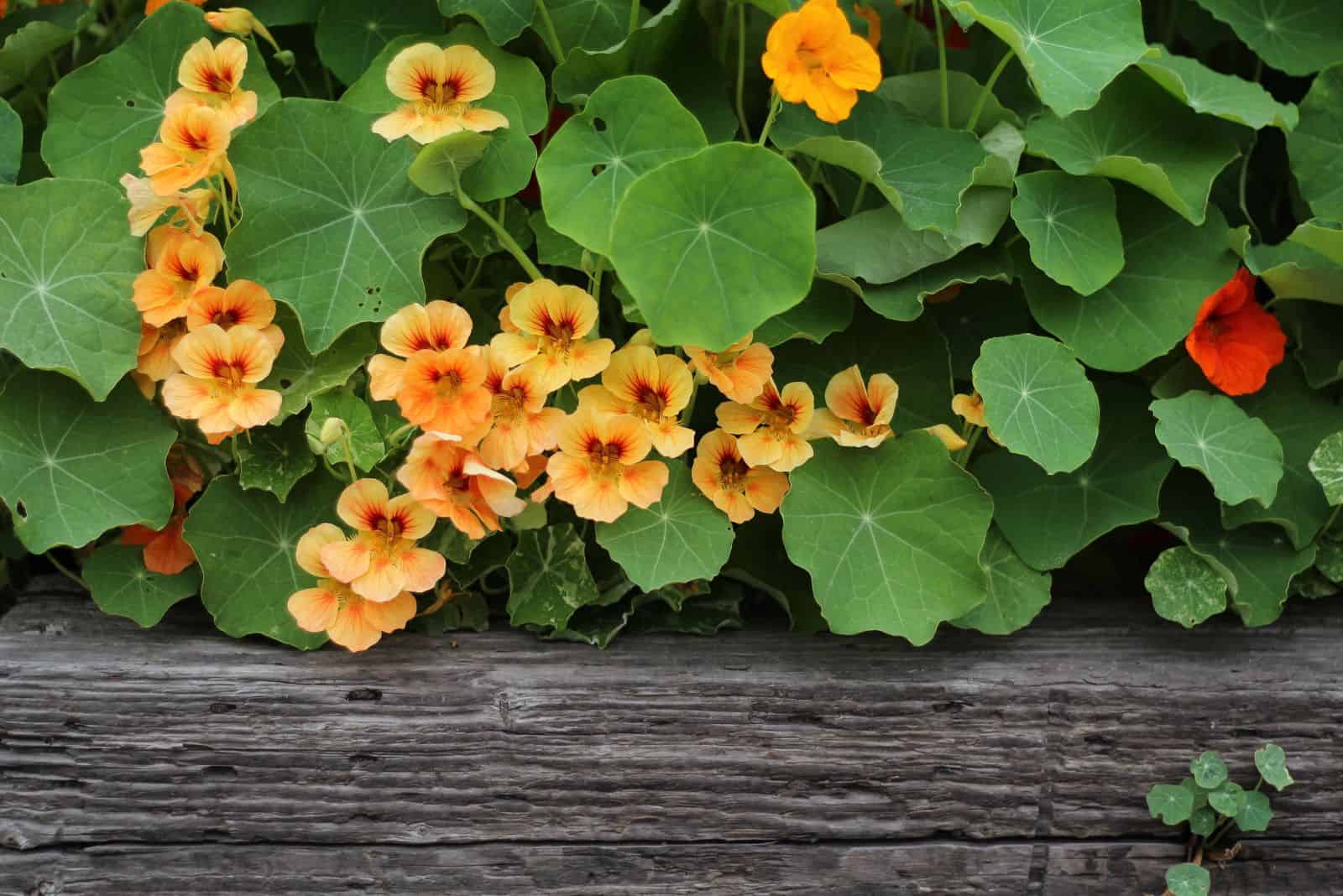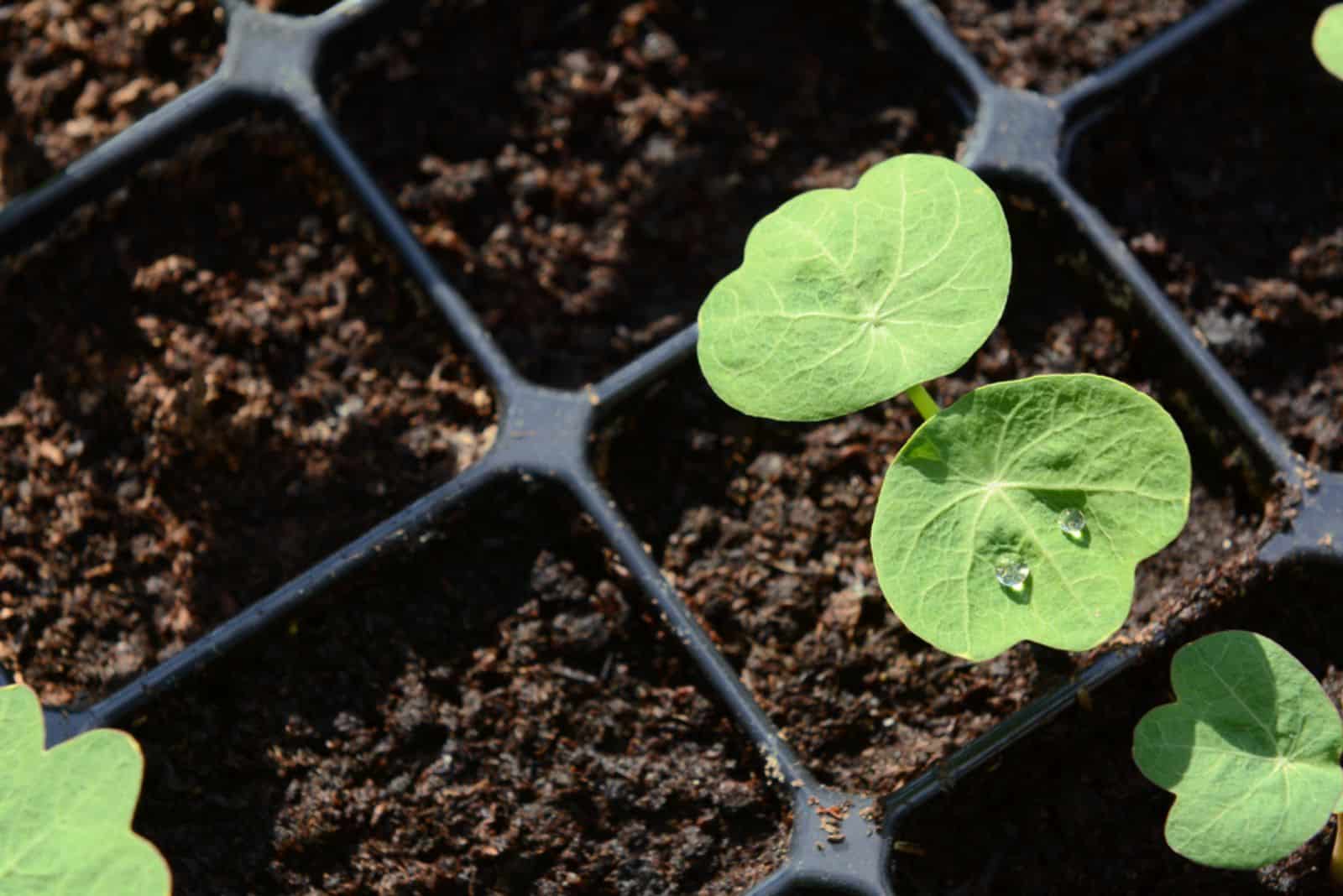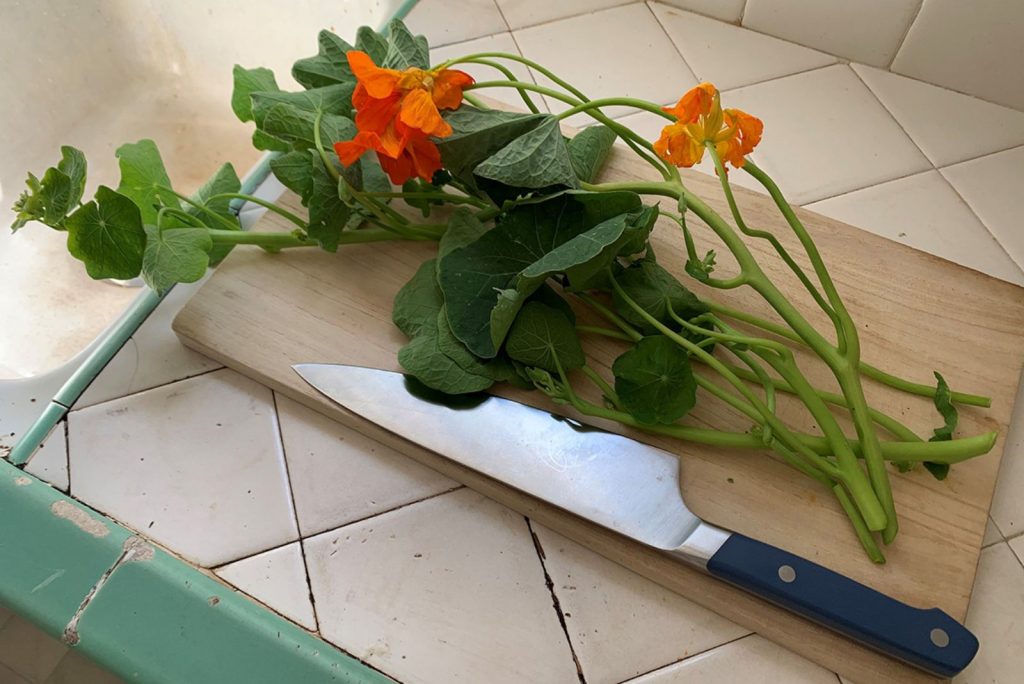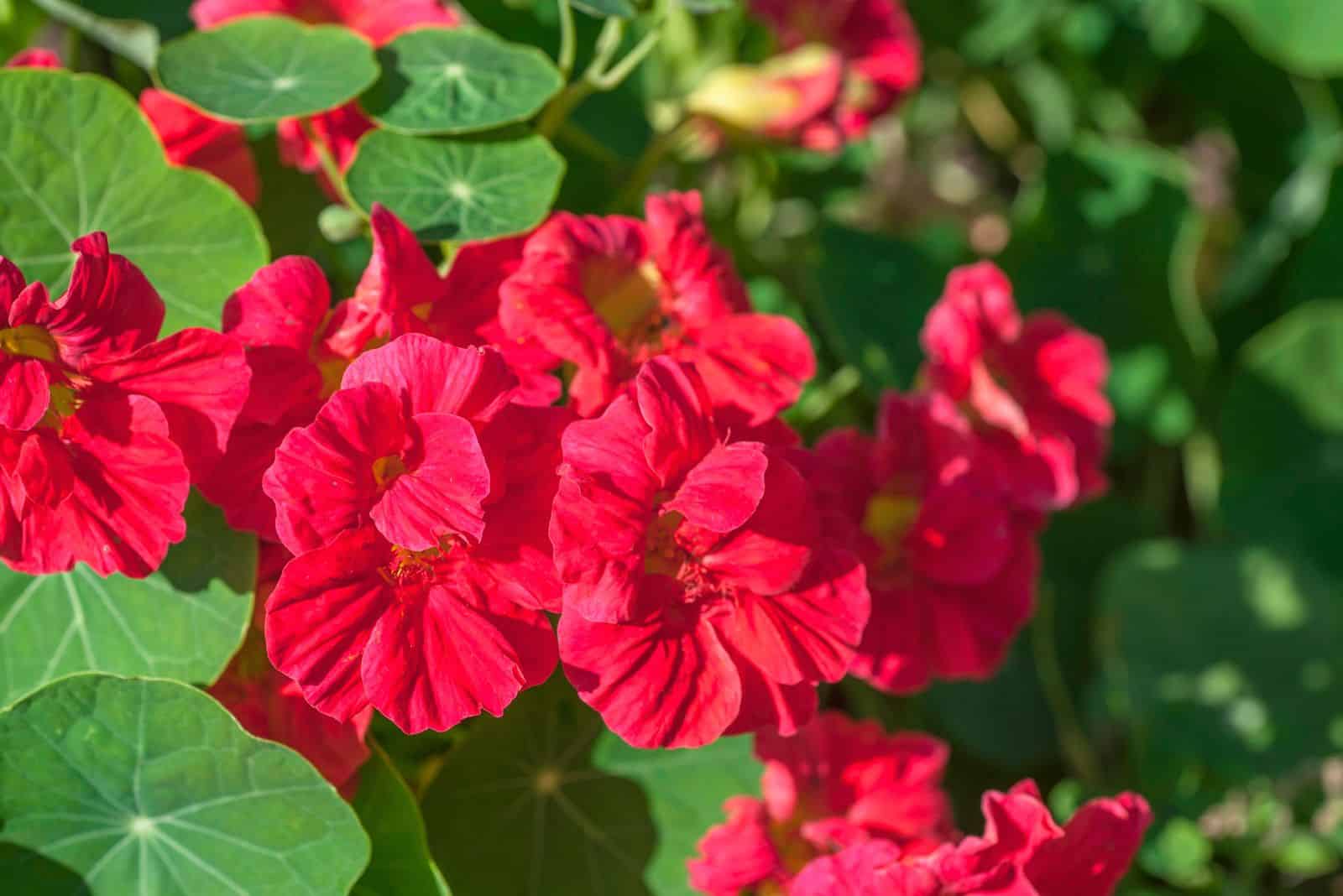Welcome to the wonderful world of nasturtiums! It’s a beautiful flowering plant, so it’s not surprising that it’s found in gardens worldwide.
Its splendid blossoms will transform your garden into a vibrant paradise often visited by pollinators, and best of all, pests won’t come near them!
The main thing is learning how to grow nasturtiums. Don’t worry, I’ve prepared a complete growing guide that includes everything from selecting the best varieties to harvesting, so you’ll have some in no time.
Let’s get started!
Nasturtium Varieties To Select
When choosing a nasturtium variety, you have to know that there are two main types. You can either choose a bush type or go with a climbing/vining type.
These types differ in growth habits. Bush types develop into smaller and more compact plants, which makes them more suitable for those gardeners who don’t have much space.
On the other hand, vining or climbing types grow into much larger plants. The cascading vines look spectacular when grown in hanging baskets.
You can also plant them in your garden but you’ll need to ensure suitable structural support.
Bush nasturtium varieties
1. Apricot: The light green foliage and apricot-colored blossoms make this nasturtium variety perfect for those who want to add a pop of color to their garden. It typically reaches 12 inches and needs about 2 months to mature.
2. Black Velvet: This variety produces an abundance of dark red blossoms. It needs approximately 2 and a half months to mature and won’t exceed 12 inches.
3. Empress of India: This nasturtium typically reaches 16 inches in about 2 months. It features lovely scarlet blossoms and bluish-green foliage.
Trailing nasturtium varieties
1. Orange Gleam: This variety generates breathtaking light orange fragrant blossoms and its vines can reach 60 inches.
2. Indian Chef: This climbing nasturtium produces light red blossoms with dark centers and won’t exceed 60 inches.
3. Jewel Mix: The brightly colored flowers of this variety appear about 2 months after planting. The vines can reach 24 inches.
When To Plant The Seeds
The perfect time to plant nasturtiums depends on your climate, so you need to plan everything ahead.
You have two options: start the seeds indoors or plant them directly in the soil.
If you decide on the first one, start the seeds approximately 2 to 4 weeks before the last frost. Bear in mind that nasturtiums started indoors are very sensitive and there’s a possibility they won’t survive transplantation.
This is the main reason many growers decide to plant the seeds directly in the soil. The only thing to pay attention to is the date, which is approximately 2 weeks after the last frost.
The temperature in the soil should be somewhere between 55 and 65 degrees Fahrenheit for the germination to succeed.
There’s always the possibility of a late frost, so if you decide on planting nasturtium seeds directly in the ground, make sure to protect the seedlings.
Preparing The Planting Site
Nasturtiums will only develop into healthy plants if they’re provided with a lot of direct sunlight and grown in porous soil. Soil pH has to be slightly acidic to neutral.
Many beginner growers have asked me if nasturtiums tolerate filtered sunlight. It won’t stunt their growth but it will affect the number of blossoms.
Here are things to pay attention to when preparing the site:
1. Aim for free-draining soil types to prevent water accumulation.
2. Check the last frost date and prepare structural support if you decide on trailing types.
3. If you grow nasturtiums as companions, pay attention to spacing to avoid overcrowding.
Tips For Planting Nasturtiums
Sow nasturtium seeds in holes ½ an inch deep. The distance between each hole should be approximately 12 inches.
If you are planting the nasturtium seeds next to some veggies in your garden, make sure to keep the recommended distance.
How Long Does It Take For Nasturtium Seeds To Germinate?
Luckily, you don’t need to wait a long time for the nasturtium seeds to germinate. If you meet all the requirements, you can expect germination in about 10 to 14 days after sowing.
If you started the seeds indoors, thin the plants to only one in each container by removing the weaker seedlings.
How Long Do Nasturtiums Need To Grow?
Once germination is complete, you can expect new growth in about a week or so. However, this timeframe refers to plants that receive a lot of direct sunlight.
On the contrary, nasturtiums that grow in partial shade may take more than 10 days to generate new growth.
When it comes to nasturtiums started indoors, you must wait until the root system is strong enough. If there’s a lot of new growth above the soil line, your nasturtiums are ready for transplantation.
Remember, the weaker the root system, the bigger the chance of transplant shock.
How Long Till Blooms?
Nasturtiums are one of the prettiest colorful annuals and will generate a lot of blossoms through the flowering season. You can expect the first blooms to occur in about 35 to 50 days after seed germination.
The time nasturtiums take to bloom also depends on the variety. For instance, bush types display first blossoms earlier than vining types.
Another factor that affects flower production is sun exposure. Blossoms will appear earlier if you keep your nasturtiums in full sun.
Caring For Nasturtiums
Nasturtiums aren’t hard to maintain but some things need to be considered. The first is soil moisture content.
Generally speaking, these plants show some tolerance to drought but grow best in moist soil. Of course, you need to be careful not to overwater your nasturtiums because it can lead to root rot.
It’s not uncommon for nasturtiums to suffer from shock during hot summer days. These are edible plants, so you can determine if they are heat-stressed if their flavor is too intense. You can fix this issue by keeping the soil consistently moist.
You can encourage the production of new blossoms and leaves by deadheading and trimming. If you cultivate these plants in pots, you should prune them back to promote new growth.
Harvesting
This is the best part of plant care, no matter which species you grow. You can damage the plant when harvesting, so you should be extra careful.
Prepare a sharp pair of scissors and cut the foliage, blossoms, and seed pods. Repeat the process frequently to encourage your nasturtiums to produce more new growth.
When should you harvest nasturtiums? It mainly depends on the part you intend to use in cooking.
For example, if you want the leaves for stuffing, you need to wait until they’re large enough. You should pick younger leaves if you want to add nasturtiums to salads. Of course, if you intend to use blooms in cooking, wait until the flowering season starts and the flower buds open.
You can also use seeds in many dishes, but don’t harvest them until they harden.
Similarly, you should wait for the seeds and seed pods to harden if you want to save them for the next season.
Put them in a paper bag and store them in a dark, cool location.
Why Grow Nasturtiums?
I often recommend nasturtiums to beginners for these 4 reasons.
1. They look spectacular. Nasturtiums will fit into every garden design and combine perfectly with other colorful plants and flowers.
2. They are delicious. Even though nasturtiums aren’t frequently used in cooking, they taste great in salads and sauces.
3. They act as a trap crop. Pests can destroy any plant, no matter which species you grow. Nasturtiums serve as trap crops and will help you get rid of these nuisances.
4. They attract pollinators: The icing on the cake! Your garden will be full of pollinators and beneficial insects if you add nasturtiums.
FAQs
Do nasturtiums come back every year?
These are annual plants, so you’ll need to replant them every season. However, they are highly adaptable and can be grown as perennials in frost-free regions.
Do nasturtiums grow well in pots?
Nasturtiums make excellent potted plants as long as you meet their requirements. Bush types are more suitable for container gardening. Vining varieties are perfect for hanging baskets because they need space for the vines to extend.
Are nasturtiums good for the soil?
Yes, these plants are good for the soil. When they decompose, they’ll boost nutrient levels in the soil. If you are deadheading or trimming, you don’t have to dispose of cut plant parts. Leave them on the ground and they’ll decompose and make an excellent mulch for other plants.
By following our guidelines, you’ll have a flourishing nasturtium garden in no time.
Enjoy its vibrant colors, rich flavor, and culinary delights!
Until next time.

